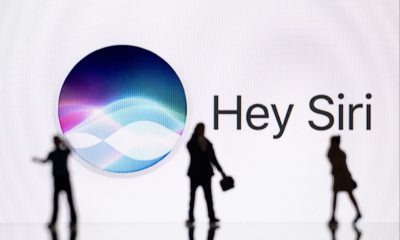Personal Finance
Banks may be hiking savings rates to hold on to customers amid SVB crisis

The Silicon Valley Bank crisis has hammered stocks and almost certainly will curtail lending and economic growth this year. But it appears to be translating into a perk for consumers: Higher bank savings rates.
With some jittery depositors shifting their money from regional banks to large ones, at least some banks are lifting their savings account and CD rates to incentivize customers to stay put or to attract new money to replenish reserves, analysts say.
“It’s likely that concerns about maintaining deposit levels have put upward pressure on some deposit rates at some banks,” says Ken Tumin, founder of DepositAccounts.com, which tracks bank savings and CD rates. Banks, he says, want to “shore up their deposits to reduce the odds of being hurt by a bank run.”
Some online banks, in particular, have increased deposit rates because it’s easier for their customers to move money to competitors, he says.
Sometimes, it’s good not to save: Is it OK not to save for retirement? Sometimes, the answer may be yes. Here’s why.
Blockbuster mystery?: Late fees, popcorn and the ’90s: Fans in a frenzy after discovering Blockbuster website is live
Ally Bank jacked up the rate of its 11-month, no-penalty CD from 4% to 4.75% on Saturday, March 11, just after SVB’s failure, Tumin says. The big jump and the weekend timing of the move were both unusual and may have been designed to “reduce outflows of deposits from skittish customers,” he wrote on his website.
The higher rate means an extra $138 in interest during the 11-month term on a $20,000 deposit.
Ally Bank didn’t respond to an email seeking comment.
Rather than stem the loss of funds, some banks may simply be trying to snare a share of the deposits ricocheting through the banking system, one analyst says.
“I think banks are being opportunistic and seeing this….as a good opportunity to capture a customer relationship,” says Garry Zimmerman, founder of MaxMyInterest.com, a platform that lets consumers move money among banks that pay the highest rates.
Sticker shock returns: Why are used-car prices going up? What the cost bump means for inflation, more
Why did Silicon Valley Bank go under?
SVB collapsed when concerns about its financial health led customers whose deposits were uninsured –because they topped the FDIC’s $250,000 limit — to shift their money to bigger banks with more stable assets. Banks rely on deposits to make loans.
A similar meltdown triggered the demise of Signature Bank of New York, threatened First Republic Bank and prompted many depositors across the country to reshuffle their deposits. To contain the crisis and prevent other bank runs, federal regulators have stepped in with aid to ensure that uninsured depositors can access their money.
During the week that SVB and Signature failed, regional and smaller banks lost a record $119 billion in deposits while the 25 largest banks gained $67 billion in deposits, according to a JPMorgan analysis of Federal Reserve data released Friday.
The effect of the crisis on savings rates can be difficult to isolate because bank interest rates were already climbing significantly in the past year as the Fed has hiked its key short-term rate by 4.75 percentage points to fight inflation – its boldest such campaign since the early 1980s.
The surprising costs behind diabetes treaments: The biggest cost is (surprisingly) not insulin
Are banks raising interest rates on savings accounts?
While most physical banks with branches have nudged up savings rates just slightly to 0.35% because they’re awash with deposits, online banks have been more aggressive. The average online savings rate is 3.52%, up from 0.49% a year ago, and the average online 1-year CD rate is 4.56%, up from 0.67% a year ago, according to DepositAccounts.com.
The pace of the rate increases, however, accelerated after the SVB crisis first made headlines on March 8, Tumin says. The average online savings rate rose by 22 basis points to 3.74% from March 1 to March 24, compared with increases of 4 basis points from January 1 to February 1, and 17 basis points from February 1 to March 1.
Yet the Fed has been slowing its rate hikes from a half percentage point in December to a quarter point each in early February and last week. That suggests the recent pickup in bank rate increases is at least partly a byproduct of the SVB crisis and its ripple effects, Tumin says.
More expensive: ‘Things just kept getting more expensive and worse’: Credit card debt is surging but fewer Americans can pay it off
Where can I get the most interest on my savings?
Although the bump in average rates is modest, some banks have pushed up rates more substantially.
Phoenix-based Western Alliance, a regional bank whose shares plunged in mid-March during the SVB fallout before recovering recently, increased the rate of its high-yield savings account three times from March 14 to March 22. The rate climbed from 4.45% to 4.75%, according to DepositAccounts.com.
Western Alliance declined to comment.
MainStreet Bank of Fairfax, Virginia, introduced a 15-month, no-penalty CD with a 5% rate on March 14 but the small bank had planned to roll out the product before the SVB crisis, says CEO Jeff Dick. He says the bank’s deposits have grown, rather than shrunk, in the wake of SVB’s troubles.
He added, however, that MainStreet was planning to offer the CD for just three weeks. With many customers shifting deposits since the crisis, “We’re going to keep it out there now” another week or two. “I definitely want to have more of a cushion.”
Some analysts don’t see a connection between the bank crisis and higher savings or CD rates.
How to cope with tax audits:What to know about IRS audit triggers, letters and more
“In a rising rate environment, banks that have been consistently paying competitive yields have repeatedly increased their payouts to remain competitive,” says Greg McBride, chief financial analyst of Bankrate.com.
Some banks are also dismissing the suggestion that the SVB crisis sparked their higher rates.
On March 17, Citizens Access, the online unit of Citizens Bank of Providence, Rhode Island, raised its online savings rate from 3.75% to 4.25%, but bank officials say the move was planned before SVB’s problems.
“We are always looking for ways to provide value, through innovative products and solutions, as well as trusted advice,” the company said in a statement.
This article originally appeared on USA TODAY: Banks are increasing savings, CD rates after SVB crisis
Read the full article here

-

 Passive Income6 days ago
Passive Income6 days agoThe One Microsoft Design Tool Business Owners Shouldn’t Miss
-

 Side Hustles4 days ago
Side Hustles4 days agoThe DOJ Reportedly Wants Google to Sell Its Chrome Browser
-

 Side Hustles7 days ago
Side Hustles7 days agoHoliday Savings: Get a MacBook Air for $250
-

 Investing5 days ago
Investing5 days agoThis Founder Turned a Hangover Cure into Millions
-

 Investing6 days ago
Investing6 days agoYour Firsthand Experiences Shape the Way You Run Your Business — Here’s How Mine Shaped Me
-

 Side Hustles4 days ago
Side Hustles4 days agoHow to Create a Unique Value Proposition (With Tips & Examples)
-

 Investing7 days ago
Investing7 days agoWant to Be a Better Coach? Focus on This One Overlooked Skill
-

 Investing3 days ago
Investing3 days agoAre You Missing These Hidden Warning Signs When Hiring?


















